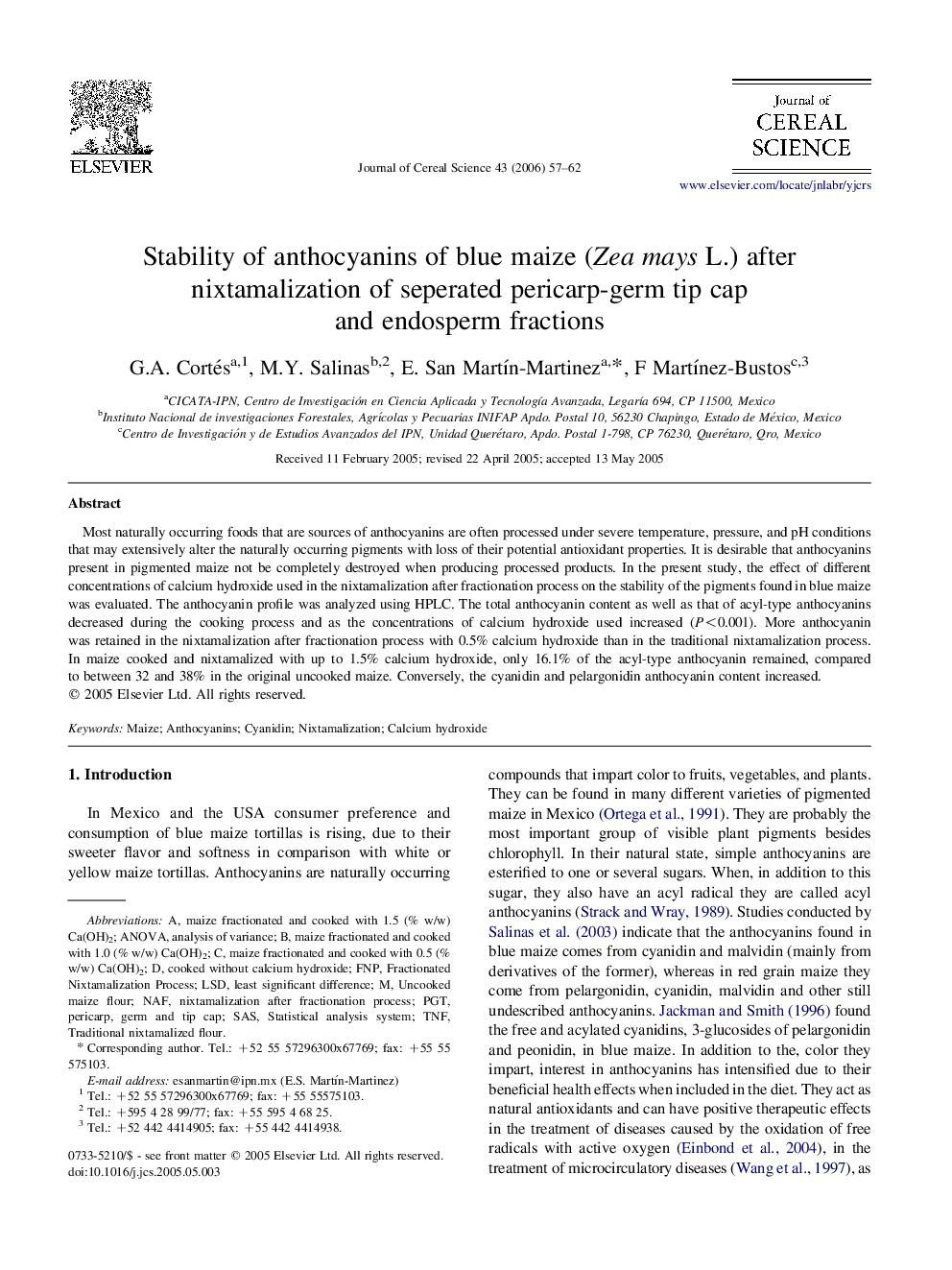| Article ID | Journal | Published Year | Pages | File Type |
|---|---|---|---|---|
| 4516879 | Journal of Cereal Science | 2006 | 6 Pages |
Most naturally occurring foods that are sources of anthocyanins are often processed under severe temperature, pressure, and pH conditions that may extensively alter the naturally occurring pigments with loss of their potential antioxidant properties. It is desirable that anthocyanins present in pigmented maize not be completely destroyed when producing processed products. In the present study, the effect of different concentrations of calcium hydroxide used in the nixtamalization after fractionation process on the stability of the pigments found in blue maize was evaluated. The anthocyanin profile was analyzed using HPLC. The total anthocyanin content as well as that of acyl-type anthocyanins decreased during the cooking process and as the concentrations of calcium hydroxide used increased (P<0.001). More anthocyanin was retained in the nixtamalization after fractionation process with 0.5% calcium hydroxide than in the traditional nixtamalization process. In maize cooked and nixtamalized with up to 1.5% calcium hydroxide, only 16.1% of the acyl-type anthocyanin remained, compared to between 32 and 38% in the original uncooked maize. Conversely, the cyanidin and pelargonidin anthocyanin content increased.
